How’s this for a shot across the bow?
The co-founder of Lyft (a shared car service similar to Uber), John Zimmer, made the claim this week that in five years, most millennials won’t own a car. If he’s right, the automotive industry would be revolutionized, and of course, massively disrupted.
The digital revolution has changed our lives and careers in incalculable ways. For the radio business, it is rocking an industry that is very much in transition – with its measurement and its mission.
From big companies and major market radio, to single owners in small markets, every broadcast radio executive is in the process of re-examining all those givens. Or they should be. It’s a difficult but healthy process, and one that requires a focus on R&D rather than ROI.
In a blog post before the holiday weekend, we talked about the 3 D’s – debt, denial, and disruption – and their impact on the broadcasting business. Now it turns out that a recent study conducted by the Global Center for Digital Business Transformation (an initiative by IMD and Cisco) provides the radio industry with some free and valuable research about that third D.
The study is called “Digital Vortex” and its sub-head is the key: “How Digital Disruption Is Redefining Industries.” While it takes a look at a broad range of industries, the media business is highlighted, as are many sectors that broadcasters depend on for advertising revenue.
It is no shocker the study concludes that digital disruption has the potential to upend traditional, incumbent companies. It suggests that markets will be redefined, unlike any other moment in the history of business. So far, that’s nothing we don’t already know from being casual readers of Mashable, TechCrunch, and even USA Today.
And yet across all industries, nearly half (45%) of companies don’t see digital disruption as an issue that is important enough to bother involving their boards of directors. A similar percentage either haven’t even acknowledged the reality of these seismic shifts or simply haven’t addressed these issues.
But the most alarming thing about this study is the impact that digital disruption is predicted to have (some say is already having) on the media business. Sometimes we take comfort in the notion that “everyone’s going through this,” from retail to travel to health care.
While that’s true, this report indicates that while the Technology sector is the most affected by digital disruption, Media & Entertainment is solidly uncomfortable in the #2 position:
Finally, the study concludes that every business sector can be disrupted differently – that there’s a variable cost of entry to upstart companies trying to get a foothold or even achieve dominance in different categories.
For broadcasters (both in radio and TV) as well as movie makers, book sellers, and other players in the Media & Entertainment space, the barriers to entry are the lowest of the industries measured.
While disrupting the Oil & Gas hierarchy comes with a very high cost to an upstart company, becoming a new media player has already been proven to be relatively easy. It is why we see the onrush of pure-play, social media, and mobile entrants – most of which can set up shop at a much cheaper rate than broadcasters (and the cost of towers and transmitters) and publishers (printing facilities, delivery).
As the study’s authors remind us:
“’Disrupting yourself’ does not mean discarding what has made you successful or mimicking in-vogue digital tactics. Rather, it involves challenging the assumptions that have underpinned that success, and stress-testing the ways in which you deliver value to customers. It means winners will be organizations agile enough to innovate rapidly and unbridle their capacity to create cost value, experience value, or platform value for their customers.”
This is more research that underscores the need to see the world and our businesses through a different filter to avoid becoming Kodak, Blockbuster, and Borders. And when you think about those deceased brands, it’s not hard to identify iPhone, Netflix, and Amazon as their chief disruptors.
If you consider Lyft’s John Zimmer’s claim that millennials will increasingly reject car ownership, it underscores how disruption has the potential to change any industry.
And the research suggests he may be right. According to the Huffington Post, the AAA Foundation for Traffic Safety reports a 30% drop in car buying among 18-34s from 2007-2011. Another factor is that many Gen Yers are delaying getting a driver’s license. And Zogby reports that a majority of millennials have already used services like Lyft, Uber, and Airbnb, so the concept of sharing is comfortable and desirable.
That’s why Ford‘s recent announcement that the automaker is testing a car-sharing concept that allows owners of their vehicles to rent them out to customers tha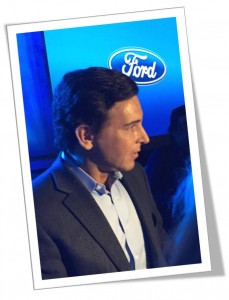 t have been pre-screened through the ride-share company Getaround. Ford’s “Peer-2-Peer Sharing” test will take place in six U.S. metros and London through late this year.
t have been pre-screened through the ride-share company Getaround. Ford’s “Peer-2-Peer Sharing” test will take place in six U.S. metros and London through late this year.
The program is an acknowledgment that services like Zipcar, Uber, and Lyft are gaining in popularity, especially among millennials. At CES last January, Ford CEO Mark Fields (left), talked extensively about a series of experiments designed to explore new desires and concepts in mobility.
This realization that while their business is being disrupted, research, innovation, and adaptive thinking are necessary ingredients in improving their brand, their services, their market share, and their bottom line. As The LA Times reports, Ford Executive Chairman, Bill Ford, says the legacy company his great-grandfather started more than a century ago has a strong realization that services like Uber are changing the consumer mindset:
“Our vision today is to expand that same thinking using advanced technology and new business models, and addressing the mobility challenges people face around the world.”
Research. Adaptability. Innovation.
Those are the key components that drive companies like Ford to work through the “3Ds” to dream up programs like “Peer-2-Peer Sharing,” which might have seemed outlandish even a year or so ago. Here’s how they frame it:
https://www.youtube.com/watch?v=YogQELG1lnc
Email recipients can watch the Ford video here.
In Ford’s case, a research study from the Penn Schoen Berland firm confirmed interest in this concept. That’s because change and adaptability start with R&D. And that’s why studies like the “Digital Vortex” are clarion calls to all broadcasters to step back, collaborate, and work together to investigate the challenges of disruption and the opportunities to thrive and capitalize from it. Even radio’s biggest companies and its 40 “most powerful” are stronger when they work together to identify threats and collaborate to solve problems.
“Digital Vortex” is a wake-up call to radio’s leaders that change is moving even faster than we think. For broadcasters, it’s a loud, incessant alarm that won’t stop until the industry recognizes that so much of what consumes its time – the committees, the controversies, the squabbles, the rumors – are tertiary to the bigger issue of disruption.
It’s time to get up.
On a related note, this year’s DASH Conference on November 4-5 in Detroit will address the “Millennial Conundrum” – one of the biggest challenges facing both the automotive and radio industries. For more information about DASH, click here.
- What To Do If Your Radio Station Goes Through A Midlife Crisis - April 25, 2025
- A 2020 Lesson?It Could All Be Gone In A Flash - April 24, 2025
- How AI Can Give Radio Personalities More…PERSONALITY - April 23, 2025



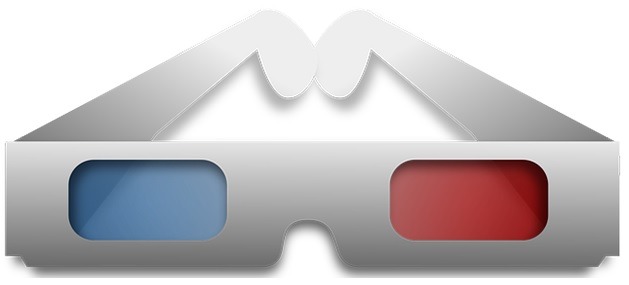
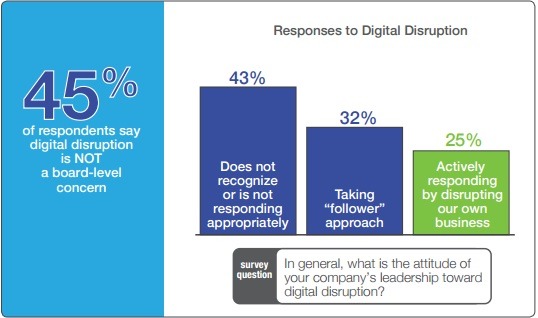
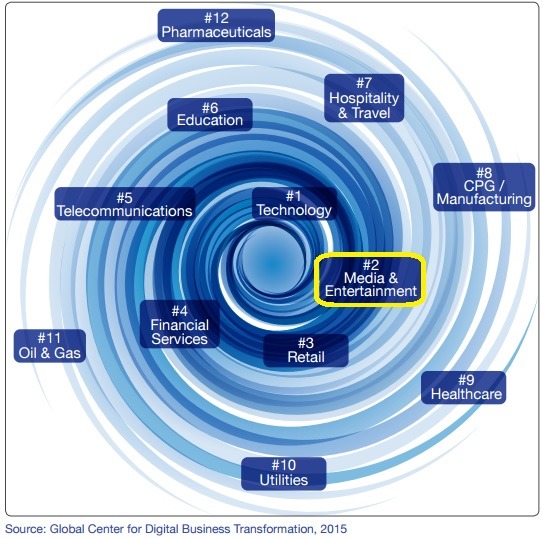
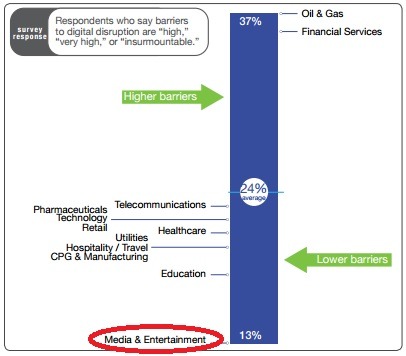

Fred said it all right here: “….one that requires a focus on R&D rather than ROI” You have to pay to play. But, that doesn’t have to mean money. Excellent audio delivery can come from an unlikely places (i.e. the daze of reel to reel). We’ve come along way from “only AM” because there were new channels that delivered new ideas. We’ve got more ways to listen than things worthy of listening. Ascertain, think, speak, report, play music. It makes sense into dollars. Clark
Clark, you picked up on a key sound bite that frames the dilemma and the opportunity well. Thanks for reading our blog.
Another great read Fred..you guys are on a real roll these days 🙂
While trying not sounding like “Debbie Downer”..it’s also why one of the reasons this “93%” number that everyone in the radio industry is so excited about has limited importance. While radio promotes itself as a reach and frequency medium, when was the last time you or Paul spoke to a client and said “Here’s what we really need guys..we need a large reach medium that we can throw a camping on and hope for the best”.
Of course not, today’s clients are looking for ROI,accountability, specificity and measurable results. Radio is still a awesome marketing medium, but screaming from the rooftops about our “amazing reach” ain’t gonna get it done, IMO>
Dave, as we’ve stated before here, “93%” isn’t a story. The industry continues to miss some of its true values and benefits and continues to push reach. Admittedly, it’s part of the story, and it supports the notion that radio isn’t going away. But how the medium engages, connects, and entertains in a unique way is what the narrative should be about. Today’s post about disrupting ourselves is an object lesson in NOT resting on the laurels of the past, but innovating and experimenting. Ford has a great reach, too, but that isn’t stopping them from looking at Uber and Lyft and trying to build a better mousetrap. Thanks for the kind words, Dave.
Great piece here – you ARE on a roll.
As far as millennials and cars are concerned, there may be SOME truth to that prediction, but to proclaim that five years from now most will be carless is both wrong and irresponsible. And it also suggests a lack of interest when most of whatever trend exists is probably due to inability to afford a car (student loans, lousy job market) more than a lack of interest in owning one. Despite trends toward urban life and telecommuting, most people still need a car to go to work and when those millennials finally get jobs and move out of their parent’s house, they’ll need one.
That said, one could make the argument that a significant part of the economic malaise most of the world has experienced in the past, say 15 years is due to digital disruption. Consider all of the jobs that have been eliminated or sent offshore due to the digital infrastructure we built in the 90s and the impact is enormous – enormous but very difficult to predict, unless you believe that in five years workplaces will disappear and millennials will all live in cities with good public transportation systems, etc. Few in the 90s envisioned anything but a rosy future and a “new economy”. We did get a new economy, but one very different than the one even economists predicted.
Now look at media for example, starting with radio. Who would have predicted iPods, music piracy, gaming, then Pandora and Spotify and smartphones would eliminate the need for iPods and piracy and that all of the music services threatening radio would be perpetual money losers. And then who would have predicted that radio’s loss in number of overall listeners would be very minor and that even the reduction in TSL loss is probably due in part to a flaw embedded digital disruption – the PPM. Or that all of this would happen as radio dumbed down an otherwise unchanged product and for the most part, got away with it.
Unintended and unforeseen consequences accompany digital disruption but knowing that stuff will happen is very different from knowing what that stuff will be. I won’t get into a long rant here, but its quite possible that the tepid recovery from the last two recessions is as much due to consequences of digital disruption as any mismanagement or political failure. Its hard to imagine that a simpler corporate tax code or series of infrastructure projects would change the fact that there are a lot of people who have been trained for jobs that no longer exist or have been permanently moved offshore. Add to that the growing need for technical skills that is out of balance with what people can or want to do and you have a great example of digital disruption that’s very real, pretty much out of control and hard to counteract.
Radio’s problem is much more granular and easy to address – and its probably comforting to know that other sectors BODs are just as clueless as radio’s. IMO, wholesale change at the top is what’s needed. It has successfully played more good will chips than it had any right to and at some point radio will have to address digital disruption. It has the skill set to do improve on what the disruptors have created enough to own the space, but needs a business model that will allow for some real, sustainable profits doing it. That kind of change will only come from the top – and right now those folks are still mostly having their kids and grandkids load music on their iPods.
This is an excellent response to a gnarly issue, Bob. I think you’re pointing to some of the more macro issues that are impacting our career and media lives that are so large in scale we often can’t recognize they’re happening. The data from this study about how companies are (not) dealing with disruption is scary and sobering. That’s for the insights, Bob, and for adding to the conversation.
Most places to live aren’t set up for one to easily get around without a car of one’s own. I’d love to cut back to one vehicle but it’s not happening. Millenials can claim they want to live packed like sardines in downtown highrises all they want, but unless we bulldoze most cities and towns and start from scratch, the kids of the millennials will still need to go to soccer practice on the west side, swim lessons downtown and the birthday party on the east side.
Digital disruption is a factor in everything-not to mention Uber and Lyft taking the jobs of taxicab drivers, AirBnB, while giving choices to travelers, takes lodging tax money out of local economies.
How does this all relate to radio? I’ve never believed predictions (usually from disgruntled ex-jocks) that the towers would come crashing down and everyone would be listening to a guy in his basement playing obscure indie band music. There’s nowhere enough bandwidth first of all, and second, even if i happened, the iHearts of this world have the promotional money to spend to get people to their streams.
Brad, the key is to at least understand where the digital disruption is coming from, strategize whether it can impact your brand, and if there’s a way to incorporate some of those assets in your overall strategy. As you note, people aren’t going to stop buying cars, and as those twentysomethings start families, minivans could even come back into vogue. But the market is clearly showing signs of shrinkage, and you have to applaud Ford for recognizing it, and launching “experiments” to see if there’s a there there. Thanks for your comments.
“If you’re not scared…..you’re out of touch.” I wake up scared every day!
Another killer post, Fred! I’m off to refill my Xanax prescription 🙂
Get a few extra doses for me, Biv. Thanks for the comment.
Major markets radio operators are in the business of selling “gross impressions” or 30 seconds of time interrupting music that allegedly reaches an audience. That’s quite different from retail radio stations that call on clients directly, who don’t have an ad agency, and develop a creative strategy to communicate the retailers unique offering to prospective customers. The vital service that has value to the advertiser is conceiving a communication strategy to be implemented across all ad platforms, analogue and digital. If you ask a retailer what they buy from media reps they would tell you they are buying strategies to get customers in the door not ads on radio or in papers or on websites. The digital disruption here is giving the retailer new means for galvanizing a relationship directly with their customers. We can help them do that both through digital means and analogue means. They are confused and are looking for someone to help them through the maze. If all you are selling is a 30 seconds break in programming, you’re dead.
Jim, thanks for making a great point. We recently hired Seth Resler whose content marketing strategies are exactly the types of integration that can deliver customers, using the assets, brands, and personalities that stations have. It is about connecting the dots. Thanks for hammering it home & for reading our blog.